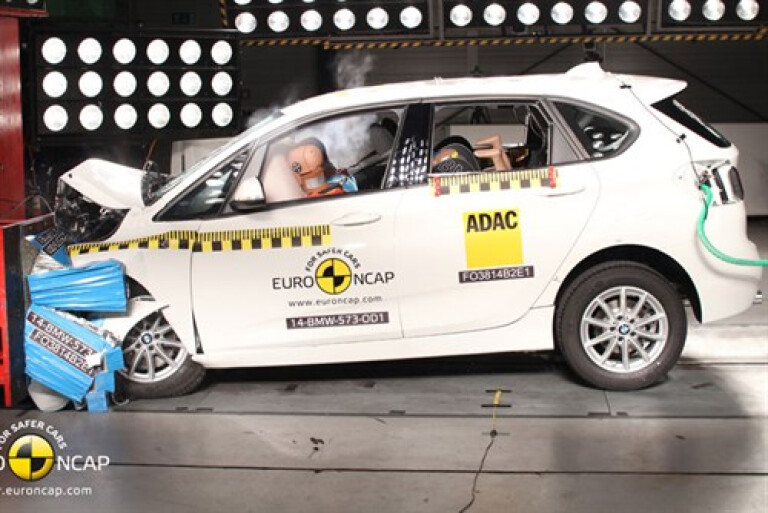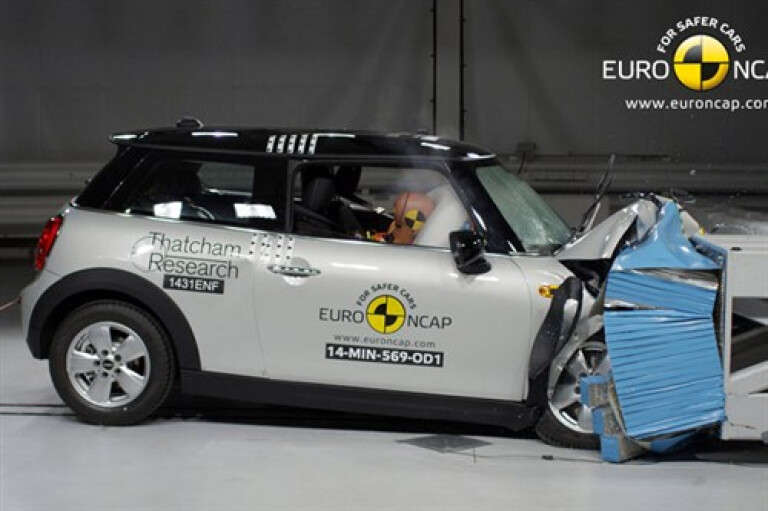-frontal-offset.jpg )
THE Australasian New Car Assessment Program has awarded the new Renault Captur a perfect safety score despite it lacking potentially life-saving side curtain airbags for the rear seats.
ANCAP chairman Lauchlan McIntosh has previously described side curtain airbags as a “vital safety feature, particularly effective in reducing the chance of serious head injury in side impacts”.
This prompted the controversial crash test authority to make them mandatory to achieve five-star results it was awarding – at least they were until 2015.
If the Captur had gone on sale in Australia in December 2014, it would have been awarded a four-star safety rating because it lacks rear side airbag protection.
But it arrived in January 2015 and was consequently awarded a higher rating.
The anomaly comes because ANCAP last year announced new protocols that would see it align with Euro NCAP testing procedures by 2018, and as part of that enter a transition period whereby Euro NCAP ratings are published as an ANCAP rating.
ANCAP chief executive Nicholas Clarke defends the maximum score by arguing the rating has a 2013 date-stamp – that is, the car was tested in 2013 in Europe – and that Australian buyers understand it’s a two-year-old car.
“If you take a narrow interpretation of the press release, you could come up with sort of any view you like,” Clarke told Wheels.

“You’ve got to look at the whole picture and, as we’ve said many times, the ratings are based on a series of very complicated tests. From year to year those tests change, the standards change and … a five-star one year may not have the same level of kit as a five-star in another year.
“It’s no difference in terms of the 2013 rating for the Captur. The rear curtain airbags were not required [when the car was tested by Euro NCAP].”
Part of the confusion – both within the automotive industry and from consumers buying cars – is because ANCAP is currently in the transition phase whereby test results published by Euro NCAP to a lower safety standard can be republished in Australia. But not always.
Confused? You’re not the only one.
The ANCAP transition to Euro NCAP protocols has been a source of confusion for consumers looking to buy safer cars.
Even seasoned motoring writers are getting caught out, with some incorrectly reporting the Wheels Car of the Year, the BMW i3, had been rated four stars for safety by ANCAP. The safety watchdog has given the i3 a maximum five-star rating, which is one star better than its European partner awarded the same car.

While promoting some vehicles, ANCAP has rated two cars with a full complement of airbags – the Mini Cooper and BMW 2-Series Active Tourer – with four stars. In the case of the BMW, it is down on the five-star Euro NCAP rating for the same car.
The four-star rating means ANCAP recommends people do not buy the newcomers from BMW and Mini, but the carmaker says it is “very confident of the safety of our cars, not just from a passive safety viewpoint but from an active safety viewpoint as well”.
“The changing criteria as well as the different criteria make it very difficult from a manufacturer’s viewpoint,” BMW Australia general manager of corporate communications Lenore Fletcher said.
“I can only imagine how confusing it is for car buyers.”
Meanwhile, Mitsubishi's new Triton ute due in a few months' time has gained a top five-star rating, as has the Land Rover Discovery Sport, and the Tesla Model S electric car.

COMMENTS